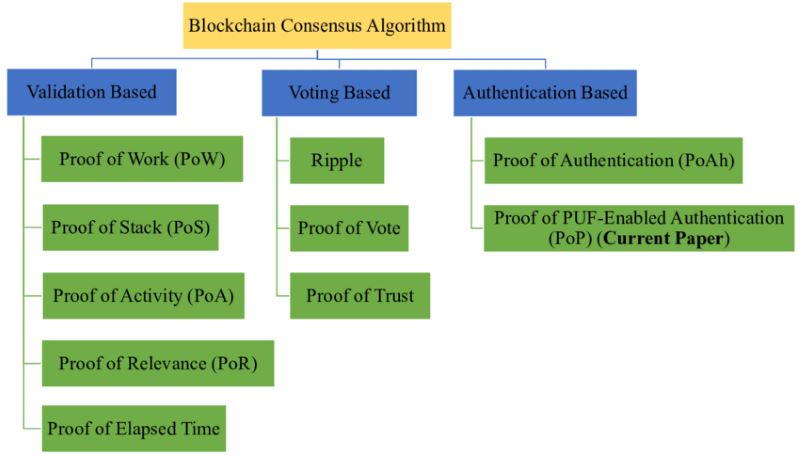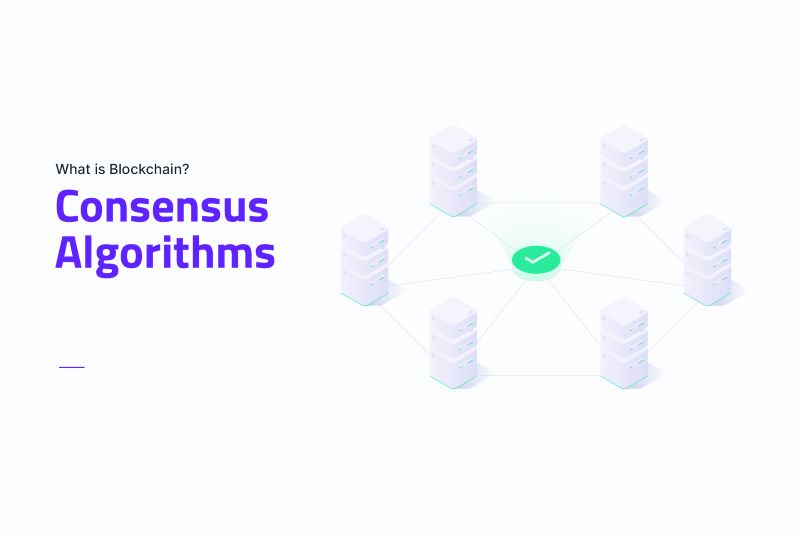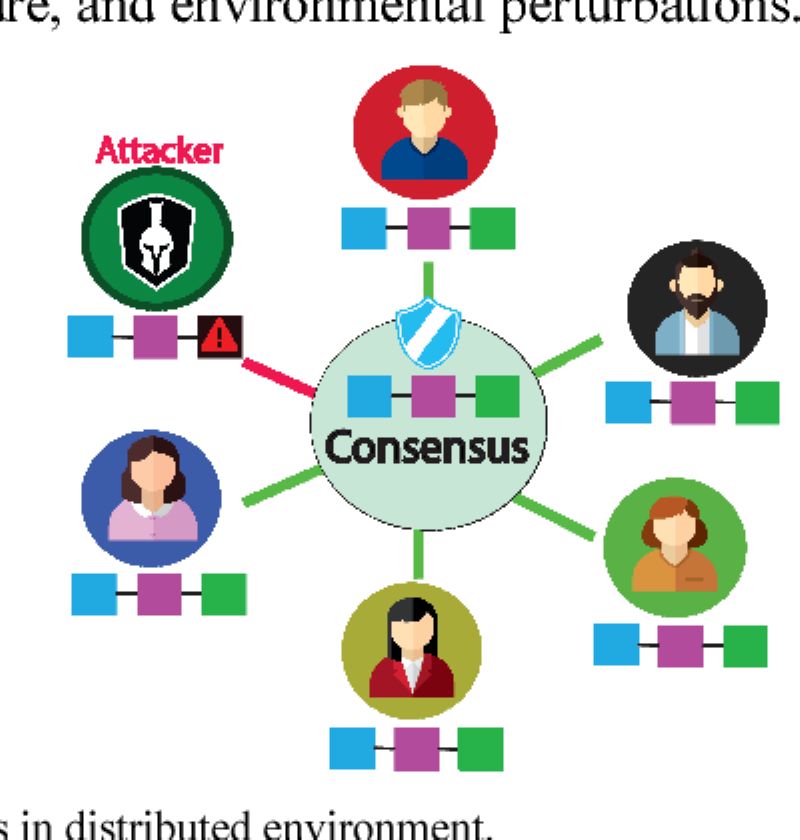At the heart of every blockchain lies a critical process, a kind of digital glue that you’ve probably heard tossed around but may not quite grasp: what is Consensus Algorithms. These are not just tech buzzwords; they are the backbone of decentralizing trust and creating a secure, online space where everyone plays fair. Imagine them as the referees in this massive digital game. Without consensus algorithms, our digital transactions could plunge into chaos, with no way to agree on who owns what and whether a transaction truly happened. Dive in with me as I peel back the layers of this cornerstone tech, comparing the well-known Proof of Work with its less energy-hungry cousin, Proof of Stake. We’ll explore the evolution from the basics to the brainier Byzantine Fault Tolerance and look beyond to the future of blockchain governance. Get ready to decode the digital DNA that is redefining our transactional world.
Understanding the Core of Blockchain Technology: Consensus Mechanisms
The Role of Consensus in Maintaining Decentralized Integrity
In a world where we play online, pay online, and even socialize online, it’s key to keep our digital doings safe. That’s where blockchain comes in, a kind of digital keeper for all our online moves. But how does it stay fair and secure for everyone? This is where consensus algorithms, the rules that keep everyone in the blockchain playing fair, shine.
A blockchain is like a giant, digital ledger book. Imagine it as a public, shared doodle space where everyone can add their bit, but nobody can erase what was there before.
Now, think of consensus like saying, “Okay buddy system, everyone agree before we move on!”. It’s the heart of blockchain. It makes sure all the copies of the ledger match. It stops cheating in its tracks. It’s like asking all your friends to make sure you all saw the same thing before you tell the story.
A Comparative Insight: Proof of Work vs Proof of Stake
When it comes to keeping the ledger straight, there’s a big debate: should we use Proof of Work or Proof of Stake? Think of Proof of Work like a big math race. Computers solve tricky puzzles to get the right to add to the ledger and get a prize in return. It’s tough work, and it chugs a lot of power, but it’s been keeping Bitcoin on track since the beginning.
Proof of Stake, on the other hand, is more like a bet. Users lock up some of their own digital coins. If they’re chosen to add to the ledger, and they play fair, they earn more coins. It’s like putting your own toy in the pot to play the game, making sure you’ll play nice since it’s your own stuff on the line.
Both methods have their fans and their foes. Proof of Work is like the good old sturdy truck – it’s been around for ages and gets the job done. But alas, it guzzles gas like there’s no tomorrow. Proof of Stake is akin to a swift electric bike – it’s slick, speedy, and saves a heap of energy. But it’s still proving that it can be just as reliable as the old truck.
So, there you have it, the nuts and bolts of keeping our digital world safe with consensus algorithms. Whether it’s the old school Proof of Work or the bright-eyed Proof of Stake, both are fighting the good fight to secure our shared digital frontier.
The Evolution of Consensus Algorithms: From Basics to Advanced Protocols
Exploring Byzantine Fault Tolerance and Its Significance
Imagine a group trying to agree on a single plan, but some members are lying. That’s the puzzle Byzantine Fault Tolerance solves. It’s vital for blockchain security. This cool method stops failures when some computers turn bad or crash. It’s like having a superhero team where even if a few members turn evil, the day still gets saved.
Byzantine Fault Tolerance means that even when some computers tell lies, the honest ones can agree on what’s true. This keeps our computer networks safe and trustworthy. It’s a big deal in blockchain because it keeps digital money safe. Without it, digital bucks could vanish or duplicate – and nobody wants that!
Innovative Approaches: Raft, Paxos, and Hashgraph
Now, let’s talk about Raft, Paxos, and Hashgraph. These are smart new ways to reach agreement across computers.
First up, Raft. It’s a leader-based idea. Imagine picking a class president to run things – Raft does that with computers to make decisions fast and smoothly.
Paxos is older and tricky but super smart. It’s like a group of wise elders making tough calls by talking them out thoroughly.
Then there’s Hashgraph. This guy’s like the new kid who plays sports differently but rocks at it. It’s faster than older blockchain methods, and it’s like everyone knows what others know – no secrets.
All these methods are about getting everyone to agree, even if some computers act up. They keep things running like a well-oiled machine. That’s what makes our digital world turn without hiccups. We need them because they make sure when we send a digital high-five (money or messages), it reaches the other side, just like we meant it to.
Consensus Efficiency and Sustainability in the Modern Era
The Environmental Impact of Mining Activities & Greener Alternatives
Mining for cryptocurrencies can use up lots of energy. This happens because the Proof of Work model needs serious computing power. Think of huge rooms full of computers, all working full-time, solving complex puzzles. This is how new coins get made and transactions get checked. But it uses the same energy as small countries sometimes!
Here’s where greener options like Proof of Stake step in. In Proof of Stake, owning coins means you can help confirm transactions. It doesn’t need those puzzle-solving computers. So, less energy gets used, and we help our planet. Teams across the world are building these eco-friendly ways to reach agreement in blockchains.
Balancing Speed and Security: Challenges in Scalability and Consensus
Now, you might ask, “Can a blockchain be fast and still safe?” That’s a tough question. When more people use a blockchain, it slows down. It’s like adding more cars to a highway – soon you’ll have a traffic jam.
We need to make blockchains that grow without losing speed or putting security at risk. Some smart folks are finding ways to do this with new types of consensus algorithms. They’re making systems that can handle more users and transactions without getting bogged down.
Validator nodes have a big job here. They’re the “checkers” making sure everything on the blockchain is right. But when we add more nodes to make things safer, it can slow things down. It’s a tricky balance to strike.
Luckily, bright minds are on the case, refining the process. They’re looking at things like leader election in consensus to smooth things out. Getting this right is key. It’s what makes blockchain trustworthy – and that’s a big deal in the digital world.
The Future of Blockchain Governance: Trust and Participation
Incentive Structures and Validator Roles in Achieving Network Consensus
What gets people excited to help run a blockchain? In a word, incentives. Blockchain technology consensus relies on folks called validators. They’re like the referees in a game, making sure everything runs smooth. They check new information and nod in agreement when it fits the rules of the blockchain. Different blockchains offer different perks to these validators. Why? To keep them honest and active in their vital role.
Proof of work and proof of stake stand as heavyweights in the world of consensus types. With proof of work, validators (“miners”) solve tough math puzzles to add new info to the chain. It takes a lot of computer power, and winning miners get new coins as a treat. This mining cements the data in place. But it gulps down a lot of energy, which isn’t great for our planet.
Proof of stake, on the other hand, works differently. Validators are picked based on how many coins they hold and are willing to “stake” or lock up as a security deposit. If they try to be sneaky and cheat the system, they lose their stake. It’s like a game where you play fair or lose your toy. Here, energy use drops, and so do the chances of harming the earth.
Navigating Governance: From Permissioned to Permissionless Systems
Governance in blockchain technologies is about how rules are made and followed. Ask yourself: who’s allowed to validate? In a permissioned system, it’s like an exclusive club. Only folks with a special invite can join in and validate. This can be great for businesses that want to keep close tabs on their network’s members. But remember, it’s not really open to everyone.
Now, zoom over to permissionless systems, where anyone can snuggle into the role of validator. It’s like an open mic night; any Joe or Jane from the crowd can pop up on stage. This full openness keeps up with the original dream of blockchains, which is all about freedom and trust among strangers.
Choosing between permissioned and permissionless systems is a big deal. It’s not just about security or speed, but also about who’s in control. Leaders in blockchain know that the heart of these systems is trust. And trust comes from a clean, open setup that lets users peek inside and nod their heads, knowing all is well and fair. Validator nodes and consensus play a huge part. They’re the boots on the ground, making sure every block fits just right.
In sum, achieving network consensus is a mix of smart incentives and clear rules. It’s the rocket fuel for blockchain’s mission, keeping the digital world spinning reliably. And as we dig deeper and untangle these techie bits, we’re paving the way for a future where trust in tech is as natural as breathing. There’s no slowing down, as blockchain keeps hustling to prove that a safe, fair digital frontier is really possible.
We have journeyed through the maze of blockchain’s heart: its consensus mechanisms. From the simple yet powerful role they play in keeping networks fair and honest, to comparing the heavyweights—Proof of Work and Proof of Stake. We dug into the roots with Byzantine Fault Tolerance and glimpsed the future with newer systems like Raft and Hashgraph.
The modern twists of consensus don’t just seek speed—they chase sustainability. We reflected on the cost of mining and eyed greener paths. Yet, finding the sweet spot between speed and firm security is like walking a tightrope.
As we look ahead, blockchain’s society of trust hinges on clever incentive schemes and the brave guardians of the network—the validators. The shift from controlled to open systems is like stepping from a canoe into the rushing river of governance. It’s a wild ride, but one packed with promise.
Remember, these blocks we build today are more than tech talk—they’re the bedrock of tomorrow’s digital trust. Keep sharing, keep questioning, and let’s shape a future where everyone has a stake.
Q&A :
What Are Consensus Algorithms and How Are They Used?
Consensus algorithms are critical components in blockchain technology and distributed computing systems. They are used to achieve agreement on a single data value or a single state among distributed processes or systems. Their utilization ensures reliability and integrity within a network, particularly when the processes or systems need to work together or agree on the state and ordering of transactions in a blockchain.
What Types of Consensus Algorithms Exist in Blockchain?
Several types of consensus algorithms are commonly used in blockchain technology, including Proof of Work (PoW), Proof of Stake (PoS), Delegated Proof of Stake (DPoS), and Practical Byzantine Fault Tolerance (PBFT). Each algorithm has its unique mechanism and serves different needs based on factors like energy consumption, transaction speed, and overall network scalability.
How Do Consensus Algorithms Ensure Security in Blockchains?
Consensus algorithms play a significant role in maintaining the security and integrity of blockchains. By requiring validation and agreement from various network nodes, these algorithms make it highly difficult for malicious actors to alter the blockchain without detection. They prevent double-spending and ensure that all transactions are confirmed and recorded accurately.
Why Are Consensus Algorithms Important for Cryptocurrencies?
For cryptocurrencies, consensus algorithms are fundamental in validating transactions and ensuring that the ledger is trustworthy and free of fraud. They help to maintain the decentralized nature of cryptocurrencies, where no single entity has control over the currency’s transaction history or issuance, thus providing a transparent and secure financial system.
What Future Developments Are Expected in Consensus Algorithms?
The field of consensus algorithms is dynamic and continuously evolving. Ongoing research in blockchain technology is aimed at addressing current limitations, such as energy consumption in PoW or the wealth concentration in PoS. Future developments may include more energy-efficient and scalable algorithms, along with hybrid models that combine the best features of existing algorithms to enhance decentralization, security, and performance.




RELATED POSTS
Dunes Airdrop – Optimizing liquidity from resting assets
Dunes Airdrop brings a solution...
2024 US Election Results – Political Shock and the Future of Cryptocurrency
The 2024 US election results...
How does blockchain technology help organizations when sharing data
Wondering “How does blockchain technology...
Discover the Benefits of Decentralized Learning Platforms with Blockchain
Transform your education with decentralized...
3 surprising effects on Pebonk when Pavel Durov was arrested
Pebonk has witnessed some unexpected...
What is the current market price of Bitcoin? Insights into today’s fluctuating values
What is the current market...
Differences Between From vs Reply To in Email Ledger
Understanding the difference between From...
The dApp Meaning – The Digital Revolution
Curious about “The dApp Meaning“?...
U2U Super App: A Central Hub for Asset Management, Privacy, and Blockchain Interactions
The U2U Super App is...
NebulaStride Airdrop – Tips to Maximize Income
To maximize your income from...
What is Data Availability Blockchain? Unraveling Decentralized Access Secrets
What is data availability blockchain?...
Impact of Regulations on Blockchain Adoption: Navigating the Compliance Maze
Understanding the Impact of Regulations...
How to add binance smart chain to metamask?
If you’ve been asking “How...
Bitcoin Charlotte and 3 Expected Growth Signals
Bitcoin Charlotte is not just...
Keith Grossman: The journey from media to finTech
Discover the life and career...
Explanation of Proof of Work: How PoW Secures Blockchain Innovation
Explanation of Proof of Work...